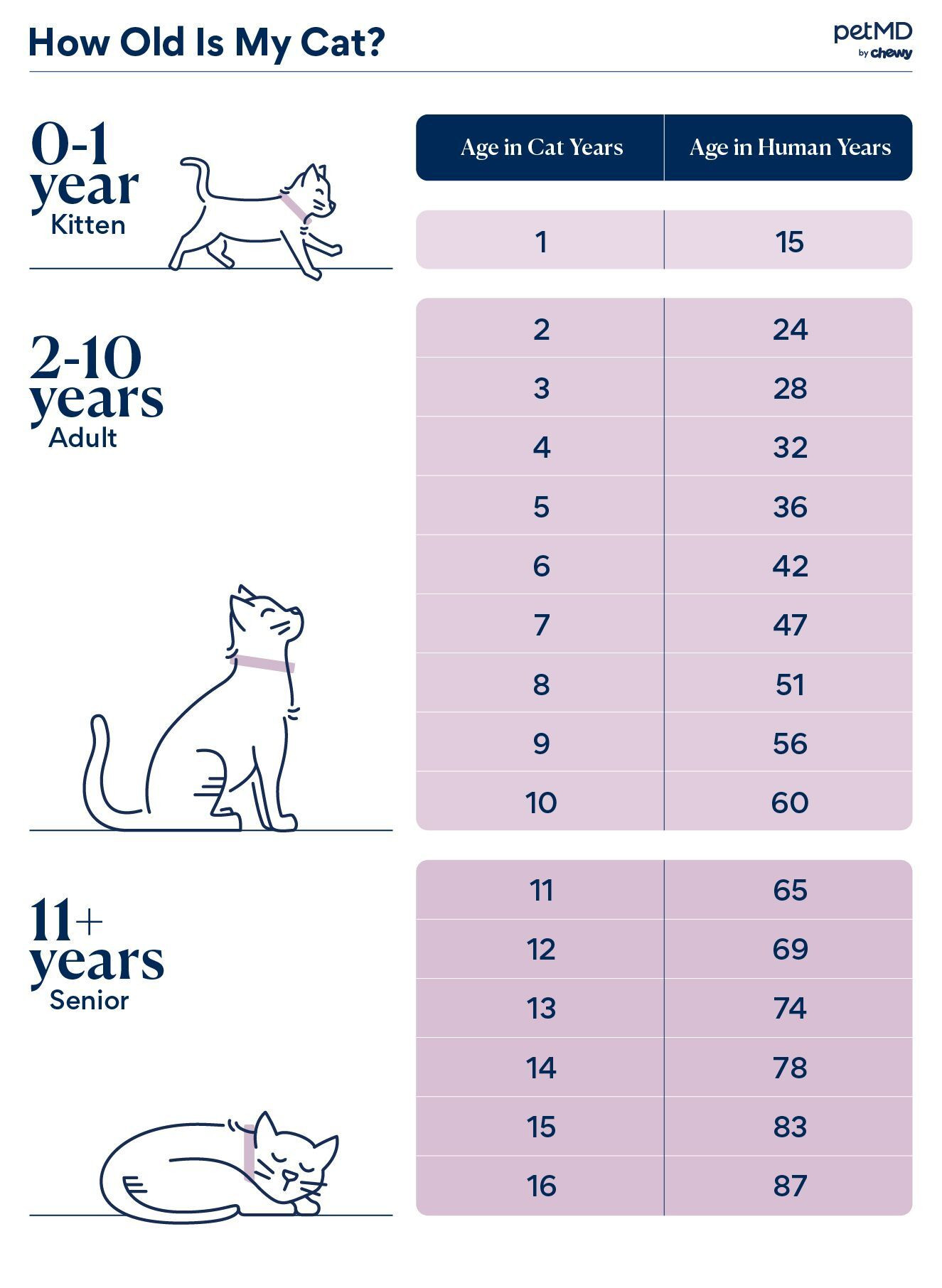Cat birthdays are a special occasion for devoted cat parents. Our feline companions are not just pets; they are cherished members of our families. However, celebrating annually doesn’t quite align with the way cats age, which is a much faster process, especially in their early years.
Understanding how to convert Cat Years To Human Years allows us to better grasp our cat’s life stage in terms we understand,” explains Dr. Mary Gardner, a Doctor of Veterinary Medicine and co-founder of Lap of Love Veterinary Hospice. “Just as we might face mobility challenges in our senior years, a cat aged 11 or older – equivalent to 60 human years – could be experiencing similar age-related difficulties.”
So, how do you accurately calculate your cat’s age in human years? It’s not as simple as the old myth of multiplying by seven!
Key Facts About Cat Aging:
- In their first year, cats age at an accelerated rate, reaching approximately 15 human years.
- Regardless of breed, cats generally age at a comparable pace.
- Veterinarians have several methods to estimate a cat’s age, particularly useful when the birthdate is unknown.
Unraveling the Cat Years to Human Years Conversion
The common misconception is that one cat year equals seven human years. However, the aging process in cats is far more nuanced, especially at the beginning of their lives.
According to the American Veterinary Medical Association (AVMA), a cat in its first year ages remarkably quickly, reaching the human equivalent of 15 years. By their second year, this progresses to around 24 human years. After the first two years, the aging process slows down somewhat. For each subsequent cat year, approximately four human years are added.
It’s important to note that a cat’s breed has minimal impact on their aging rate; the conversion is broadly consistent across all breeds.
Cat Age Chart: Cat Years to Human Years
To simplify understanding your cat’s age in human terms, refer to the chart below. This provides a quick conversion guide.
 Cat age conversion chart infographic
Cat age conversion chart infographic
Determining Your Cat’s Age When Unknown
Many cat parents adopt their feline friends without knowing their exact birthdate, often celebrating a “gotcha day” instead. However, knowing your cat’s approximate age is crucial for providing appropriate, age-specific care. Veterinarians are skilled at estimating a cat’s age using several indicators.
Here are some common methods veterinarians use to estimate a cat’s age:
- Teeth Examination: A kitten’s baby teeth erupt around 2-4 weeks of age and are replaced by permanent teeth around 3-4 months. Adult cats, depending on their age and diet, may show tartar buildup on their teeth, giving clues to their age. However, dental health varies, so this is just one factor.
- Eye Examination: Young kittens typically have bright, clear eyes. As cats age, their irises may show subtle changes. Older cats can sometimes develop cloudiness in the lens (lenticular sclerosis), which is a normal aging change.
- Coat Condition: Younger cats usually have soft, fine fur. As they mature, their coat might become thicker and coarser. Senior cats may even have patches of gray or white fur.
- Activity Level: Kittens and younger cats are naturally energetic and playful. As cats enter their senior years (around age 11 and older), they may become less active and sleep more.
Cat Lifespan and Longevity
Thanks to advancements in veterinary medicine, better nutrition, and the increasingly strong bonds between humans and their cats, our feline companions are living longer, healthier lives than ever before.
“The average lifespan for a cat is generally between 12 to 15 years. Purebred cats tend to live around 12.5 years, while mixed-breed cats often live a bit longer, averaging about 14 years,” Dr. Gardner indicates.
Understanding your cat’s age, whether in cat years or human years, is essential for providing the best possible care throughout every stage of their life. This knowledge empowers you to ensure your furry family member enjoys a happy, healthy, and long life by your side.

